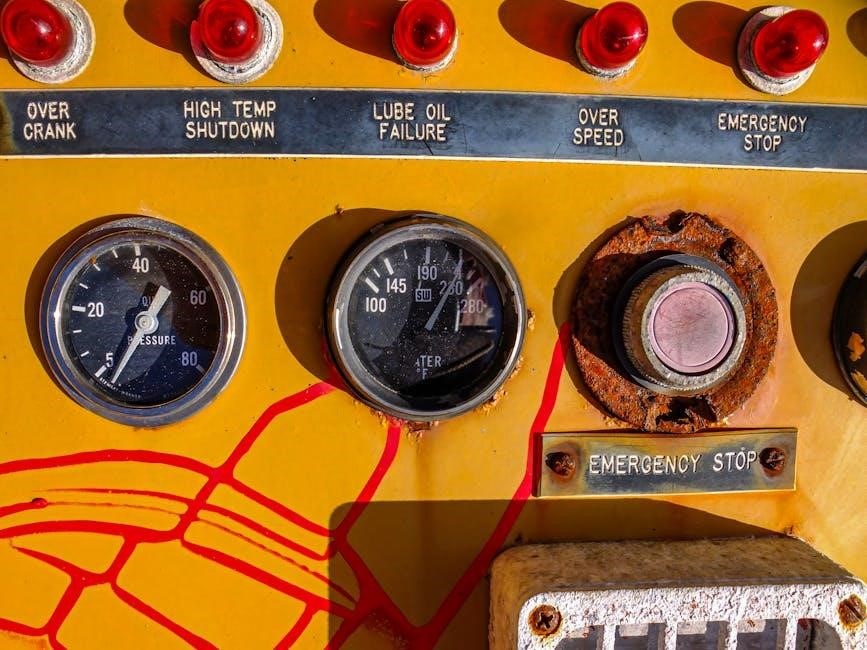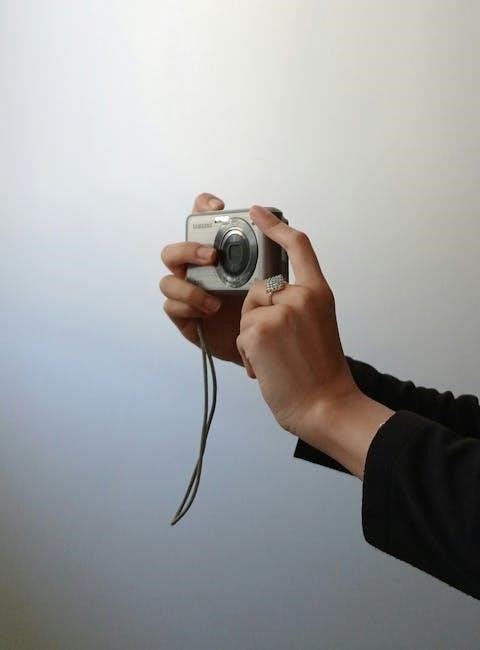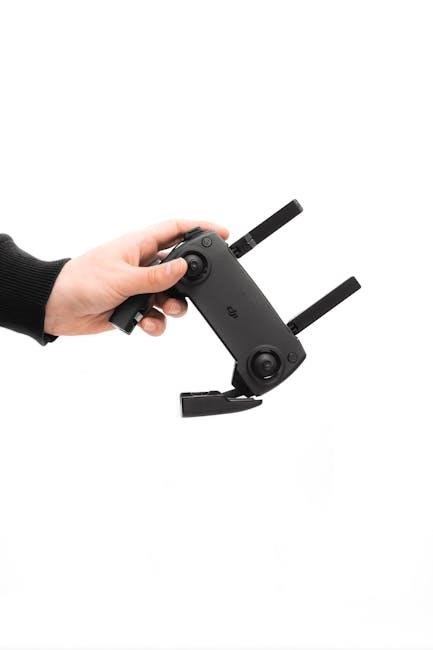nighthawk carbon monoxide alarm user manual
The Nighthawk Carbon Monoxide Alarm is a vital home safety device designed to detect dangerous CO levels, ensuring early warning and prevention of potential hazards.
1.1 Overview of the Nighthawk CO Alarm
The Nighthawk Carbon Monoxide Alarm is a reliable and essential safety device designed to detect dangerous levels of CO in the home. It features a digital display for real-time monitoring, peak level memory to track highest CO levels, and a test/reset button for easy maintenance. Available in both battery-operated and AC-powered models, it offers flexibility for different household needs. The alarm provides early warnings with distinct beep patterns and LED indicators, ensuring prompt action during potential CO threats. Its user-friendly design and comprehensive features make it a trusted choice for home safety.
1.2 Importance of Carbon Monoxide Alarms in Home Safety
Carbon monoxide alarms are crucial for home safety as they detect odorless, invisible CO gas, which can be deadly in high concentrations. The U.S. Consumer Product Safety Commission recommends at least one CO alarm per household to prevent poisoning. CO leaks from fuel-burning appliances like heaters or generators pose silent risks. Symptoms of poisoning, such as headaches or dizziness, often mimic flu, delaying recognition. A functioning CO alarm provides early warning, enabling prompt evacuation and medical intervention, potentially saving lives and preventing long-term health effects. Its presence is a critical layer of protection in any home safety plan.
1.3 Key Features of the Nighthawk Model
The Nighthawk Carbon Monoxide Alarm boasts a digital display showing real-time CO levels and peak exposure memory for accurate monitoring. It features a Test/Reset button for quick functionality checks and a loud alarm to ensure alerts are heard. The device is available in both battery-operated and AC-powered versions, with a 9V battery backup in AC models. Its sleek design and wall/ceiling mounting options enhance home integration. The Nighthawk also offers interconnectivity with other alarms, providing a comprehensive safety network. These features ensure reliable protection against CO threats, making it a trusted choice for home safety.

Understanding Carbon Monoxide Safety
Carbon monoxide is a silent threat produced by burning fuels. Understanding its dangers and using alarms like the Nighthawk is crucial for home safety and prevention.
2.1 What is Carbon Monoxide and Its Dangers
Carbon monoxide (CO) is a colorless, odorless, and tasteless gas produced by burning fuels like gasoline, wood, or natural gas. It is highly toxic and can cause severe health issues, including headaches, dizziness, and even death in high concentrations. Prolonged exposure can lead to brain damage or heart problems; CO alarms are essential because they detect invisible dangers early, providing critical time to escape. The Nighthawk alarm offers reliable protection, ensuring safety with accurate detection and clear alerts.
2.2 Symptoms of Carbon Monoxide Poisoning
Carbon monoxide poisoning symptoms include headaches, dizziness, nausea, and fatigue, often resembling flu-like illnesses. Severe exposure can cause confusion, rapid heart rate, and loss of consciousness. In extreme cases, it can lead to brain damage, heart complications, or death. Symptoms vary based on exposure levels and individual health. Infants, pregnant women, and those with pre-existing medical conditions are more vulnerable. Prompt evacuation and fresh air are crucial if symptoms arise. The Nighthawk alarm ensures early detection, providing vital time to respond and prevent severe health consequences.
2.3 Recommended Locations for CO Alarms
For optimal protection, install carbon monoxide alarms on every level of your home and outside each sleeping area. Place them at least 5 feet above the floor to ensure accurate detection. Avoid areas near fuel-burning appliances like furnaces or water heaters, as false alarms may occur. Additionally, install alarms in hallways near bedrooms and in areas where combustion sources, such as fireplaces, are present. For larger homes, consider multiple alarms to ensure comprehensive coverage. Proper placement maximizes the effectiveness of your Nighthawk CO alarm in detecting dangerous carbon monoxide levels promptly.

Components of the Nighthawk CO Alarm
The Nighthawk CO Alarm features a sleek design with a digital display, LED indicators, a Test/Reset button, and a built-in sensor for accurate carbon monoxide detection;
3.1 Description of the Alarm Unit
The Nighthawk CO Alarm unit is compact and lightweight, designed for easy installation and seamless integration into any home environment. It features a sleek, modern design with a digital display that provides clear, real-time readings of carbon monoxide levels. The unit includes LED indicators for visual alerts, a Test/Reset button for easy functionality checks, and a built-in sensor that ensures accurate detection of CO presence. The alarm is designed to be user-friendly, with clear audible and visual signals to alert occupants of potential danger. Its durable construction ensures long-lasting performance and reliability in monitoring home safety.
3.2 Understanding the Digital Display
The digital display on the Nighthawk CO Alarm provides real-time readings of carbon monoxide levels in parts per million (ppm). It features a clear, backlit screen that ensures visibility even in low-light conditions. The display shows the current CO concentration, peak level memory, and status indicators. The peak level memory function stores the highest CO level detected, helping users identify potential safety risks. The display also includes symbols for power status, battery level, and error conditions, making it easy to understand the alarm’s operational state at a glance. This feature enhances user awareness and facilitates quick decision-making in emergency situations.
3.3 Explanation of LEDs and Their Functions
The Nighthawk CO Alarm features multiple LEDs that indicate its operational status. A green LED flashes once every 30 seconds during normal operation, confirming the alarm is functioning properly. If carbon monoxide is detected, a red LED flashes rapidly, accompanied by an audible alarm. A yellow LED indicates low battery or a fault condition, such as a malfunction. These visual indicators provide immediate feedback, ensuring users are informed of the alarm’s status at all times. Understanding the LED patterns helps users respond appropriately to different situations, enhancing home safety and peace of mind.
3.4 Test/Reset Button and Its Functions
The Test/Reset button on the Nighthawk CO Alarm allows users to verify proper operation and address false alarms. Pressing and holding the button tests the alarm’s horn and LED indicators, ensuring functionality. During a false alarm, the same button silences the unit temporarily. After testing or resetting, the alarm returns to its normal monitoring state. Regular testing is essential to confirm the device’s reliability. The green LED will flash once after successful testing, indicating the alarm is ready to detect carbon monoxide again. This feature ensures users maintain awareness and confidence in their home safety system.

Installation and Setup
Proper installation ensures optimal performance. Choose locations on walls or ceilings, at least 5 feet from the floor. Follow the manual for battery or AC setup, then test the alarm to confirm functionality. Always adhere to the manufacturer’s guidelines for placement and installation to maximize safety and reliability. This ensures the Nighthawk CO Alarm operates effectively in detecting harmful CO levels and alerting your household promptly. Regular testing after installation is crucial to verify the alarm’s responsiveness and readiness. Refer to the user manual for detailed step-by-step instructions to ensure correct setup and operation. This guarantees your safety and peace of mind.
4.1 Step-by-Step Installation Guide
Begin by selecting a location for the alarm, ensuring it is at least 5 feet above the floor and away from dead air spaces. For battery-operated models, insert the batteries correctly, ensuring the polarity matches the diagram. Mount the alarm on the wall or ceiling using the provided hardware, following the manufacturer’s instructions. Once installed, press the Test/Reset button to ensure the alarm is functioning properly. The green LED should flash once every 30 seconds, indicating normal operation. Finally, review the user manual to familiarize yourself with the alarm’s features and operation. Proper installation ensures reliable protection against carbon monoxide threats.
4.2 Battery Installation for Battery-Operated Models
For battery-operated Nighthawk models, open the battery compartment located on the back of the unit. Ensure the compartment is open by sliding it downward or twisting it, depending on the model. Insert the recommended 9V alkaline battery, aligning the polarity (+ and -) with the markings inside the compartment. Avoid mixing old and new batteries or using different types, as this may reduce performance. Secure the compartment tightly to ensure proper battery contact. After installation, press the Test/Reset button to confirm the alarm is functioning correctly. The green LED should flash once every 30 seconds, indicating the unit is operational. Always refer to the user manual for specific battery recommendations and guidelines;

4.3 AC-Powered Model Setup Instructions
For AC-powered Nighthawk models, plug the unit into a 120V electrical outlet. Ensure the outlet is not controlled by a switch to maintain continuous power. If your model includes a battery backup, insert the 9V alkaline battery as described in the user manual. Align the battery’s polarity with the compartment markings to avoid improper installation. Once plugged in, press the Test/Reset button to verify the alarm is functioning. The green LED should flash once every 30 seconds, indicating the unit is operational. Refer to the manual for specific installation requirements and safety precautions.
4.4 Mounting the Alarm on the Wall or Ceiling
Mount the Nighthawk CO alarm on a wall or ceiling using the provided mounting bracket. Ensure the surface is level and secure. Avoid areas near vents, direct sunlight, or extreme temperatures. For wall mounting, place the alarm at least 12 inches from the ceiling. On the ceiling, mount it at least 12 inches from any wall. Use screws or anchors suitable for your wall type. After mounting, test the alarm by pressing the Test/Reset button to ensure proper functionality. Refer to the manual for specific placement recommendations to maximize detection accuracy and safety. Proper installation ensures reliable protection.
4.5 Initial Testing After Installation
After installing the Nighthawk CO alarm, press the Test/Reset button to ensure proper functionality. The alarm will sound, and the green LED will flash once every 30 seconds, indicating it is working correctly. Test the alarm in multiple locations to verify it detects CO levels accurately. Avoid testing near vents, direct sunlight, or extreme temperatures, as this may cause false readings. Ensure the alarm is free from obstructions and interference; Successful testing confirms the unit is operational and ready to provide reliable protection against carbon monoxide threats in your home.

Maintenance and Care
Regularly clean the alarm with a soft cloth to prevent dust buildup. Replace batteries as needed and ensure the unit is free from obstructions for optimal performance.
5.1 Cleaning the Alarm Unit
Regular cleaning ensures optimal performance. Use a soft, dry cloth to gently wipe the exterior and vents of the Nighthawk CO alarm. Avoid harsh chemicals or moisture, as they may damage the sensor or electronics. For stubborn dust, lightly brush with a soft-bristle brush. Ensure all openings remain unobstructed to maintain proper airflow. Cleaning helps prevent false alarms and ensures accurate detection of carbon monoxide levels. Refer to the user manual for detailed instructions to avoid unintentional damage during the cleaning process.
5.2 Replacing Batteries
To maintain your Nighthawk CO alarm’s reliability, replace batteries as indicated. Use a 9V alkaline battery for optimal performance. Turn off the power source before replacing. Open the battery compartment, located on the back, by sliding it downward. Remove the old battery and insert the new one, ensuring correct polarity. Close the compartment securely. Test the alarm by pressing the Test/Reset button to confirm proper function. Replace batteries immediately if the low-battery signal sounds or the LED flashes yellow. For battery-operated models, replace batteries every five years or as indicated by the end-of-life signal.
5.3 Understanding the End-of-Life Signal
The Nighthawk CO alarm features an end-of-life signal to indicate when it needs replacement. After approximately five years of use, the alarm will emit a series of short beeps and the LED will flash yellow. This signal cannot be silenced or reset, as it signifies the alarm’s sensor has reached its operational limit. Replace the unit immediately to ensure continuous protection. Refer to the user manual for specific instructions on replacing the alarm. Do not ignore the end-of-life signal, as it is crucial for maintaining home safety and reliability.
5.4 When to Replace the Alarm
The Nighthawk CO alarm should be replaced after five years of service, as indicated by the end-of-life signal. However, replacement may be necessary sooner if the unit is damaged, exposed to high levels of carbon monoxide, or experiences malfunction. The alarm’s warranty period, typically five to seven years, also serves as a guideline for replacement. Always refer to the user manual for specific instructions, as some models, like the KN-COSMXTR-B, may have a seven-year warranty. Ensure timely replacement to maintain reliable protection against carbon monoxide threats.
5.5 Regular Maintenance Schedule
Regular maintenance ensures optimal performance of the Nighthawk CO alarm. Test the alarm monthly using the Test/Reset button to verify proper function. Clean the unit with a soft cloth to remove dust and debris, avoiding harsh chemicals. Inspect for physical damage or wear. Replace batteries annually in battery-operated models or as indicated by low-battery signals. Additionally, check for the end-of-life signal, which alerts when the alarm needs replacement. Follow the user manual for detailed maintenance steps to ensure continuous protection against carbon monoxide threats.

Troubleshooting Common Issues
Troubleshooting your Nighthawk CO alarm involves checking for false alarms, understanding LED indicators, interpreting beep patterns, solving connectivity issues, and resetting the device as needed.
6.1 Dealing with False Alarms
6.2 Understanding LED Light Indicators
The Nighthawk CO alarm uses LED lights to indicate its status and alert you to potential issues. A green LED indicates normal operation, flashing once every 30 seconds. A red LED signals a CO alarm or error condition, such as a malfunction. Yellow LEDs may indicate low battery or sensor problems. Understanding these indicators helps you respond appropriately, ensuring your safety and the alarm’s reliability. Always consult the user manual for detailed explanations of LED patterns and their meanings to maintain proper functionality and address any concerns promptly.
6.3 What the Different Beep Patterns Mean
The Nighthawk CO alarm uses distinct beep patterns to signal different conditions. Four quick beeps followed by a pause indicate a carbon monoxide detection. A steady beep signals a low battery or error, such as a malfunction. The alarm also emits a continuous beep during testing. Understanding these patterns is crucial for responding appropriately. For example, four quick beeps require immediate action, like moving to fresh air. A steady beep may indicate maintenance is needed. Always refer to the user manual for a detailed explanation of beep patterns and their meanings to ensure safety and proper alarm function.
6.4 Solving Connectivity Issues
Connectivity issues with the Nighthawk CO alarm can occur if it is part of an interconnected system. Ensure all units are properly connected and powered. Check wiring for damage or loose connections. If using wireless interconnectivity, verify that all alarms are compatible and synced. Restart the system by resetting each unit. If issues persist, refer to the user manual or contact customer support. Regularly updating firmware may also resolve connectivity problems. Always ensure alarms are installed and maintained as per the manufacturer’s guidelines to maintain reliable operation and safety.
6.5 Resetting the Alarm
To reset the Nighthawk CO alarm, press and hold the Test/Reset button until the alarm stops sounding. This will clear any error or alarm conditions. Ensure the button is released after the reset to avoid further activation. If the alarm continues to sound, check for the presence of carbon monoxide and ventilate the area if necessary. After resetting, verify the green LED flashes to confirm proper operation. Regular resetting ensures the alarm functions correctly and maintains your home’s safety. Always refer to the manual for detailed reset procedures specific to your model.

FAQs About the Nighthawk CO Alarm
- How long does the battery last? Batteries typically last up to 5 years, depending on usage and model.
- Can I interconnect multiple alarms? Yes, certain models support interconnection for whole-home protection.
- Why does my alarm keep beeping? Continuous beeping may indicate CO detection or a low battery.
- Is the digital display always on? The display is always on, showing CO levels and status updates.
- How do I test the alarm? Press the Test/Reset button to ensure proper functionality.
7.1 How Long Does the Battery Last?
The battery life of the Nighthawk CO Alarm typically lasts up to 5 years, depending on the model and usage. Battery-operated units are designed to provide continuous protection, with some models featuring a 10-year sensor life. The alarm will alert you with a low-battery signal when it’s time to replace the battery. For optimal performance, avoid exposing the alarm to extreme temperatures or humidity. Regular testing using the Test/Reset button ensures the unit is functioning correctly. Always replace batteries promptly when indicated to maintain safety and reliability.
7.2 Can I Interconnect Multiple Alarms?
Yes, certain Nighthawk CO Alarm models support interconnectivity, allowing multiple units to be linked together; This feature ensures that if one alarm detects carbon monoxide, all interconnected alarms will sound, providing enhanced safety throughout your home. Wired models typically support this functionality, while battery-operated units may have limitations. Refer to your specific model’s manual for compatibility details. Proper installation and following the manufacturer’s guidelines are essential to ensure reliable performance. Interconnecting alarms can significantly improve early warning capabilities, offering greater peace of mind for your family’s safety.
7.3 Why Does My Alarm Keep Beeping?
Your Nighthawk CO Alarm may beep due to detection of carbon monoxide, low battery levels, or a malfunction. Four quick beeps indicate CO presence, while a steady beep often signals a low battery. If no CO is detected, check the battery or test the alarm using the Test/Reset button. Ensure the unit is clean and free from dust, as this can trigger false alarms. If beeping persists, it may indicate an end-of-life signal, requiring replacement. Always refer to the manual for specific beep patterns and troubleshooting guidance to address the issue effectively and ensure your safety;
7.4 Is the Digital Display Always On?
The digital display on the Nighthawk CO Alarm is designed to remain active, providing real-time carbon monoxide level readings and peak memory data. While the display is always on, its brightness may vary depending on the model and settings. For battery-operated units, the display may dim or only illuminate when detecting CO to conserve power. AC-powered models typically maintain a constant, low-level illumination. Some versions offer a dimmer feature or night mode to reduce light intensity during sleep hours. Refer to your specific model’s manual for details on display settings and customization options.
7.5 How Do I Know If the Alarm Is Working Properly?
To ensure the Nighthawk CO Alarm is functioning correctly, press the Test/Reset button. A loud beep confirms the alarm is operational. Additionally, check the LED indicators: a steady green light indicates normal operation, while a red light signals detection of CO. Regular testing, as outlined in the user manual, is essential to maintain reliability. Monthly testing is recommended to verify proper function and ensure your family’s safety. If the alarm does not respond during testing, it may indicate a malfunction or low battery, requiring immediate attention or replacement.

Warranty and Customer Support
The Nighthawk CO Alarm comes with a 5-year limited warranty. For assistance, contact Kidde’s Consumer Hotline at 1-800-880-6788 or visit their official website for support resources.

8.1 Warranty Information
The Nighthawk Carbon Monoxide Alarm is backed by a 5-year limited warranty, covering manufacturing defects in materials and workmanship. The warranty period begins from the date of purchase, provided the alarm is installed and maintained according to the user manual. Damage caused by misuse, improper installation, or tampering is not covered. For warranty claims, customers must provide proof of purchase and contact Kidde’s customer service. The warranty ensures reliable protection and peace of mind, aligning with Kidde’s commitment to quality and safety standards.
8.2 Contacting Customer Service
For any inquiries or concerns regarding your Nighthawk Carbon Monoxide Alarm, contact Kidde’s Consumer Hotline at 1-800-880-6788. Representatives are available to assist with troubleshooting, warranty claims, and general questions. Be prepared to provide your alarm’s model number and a detailed description of your issue. Additionally, you can visit Kidde’s official website for online support resources, including FAQs, manuals, and contact forms. Ensure you have your product information ready for efficient assistance. This service ensures timely resolution and optimal use of your safety device.
8.3 Online Resources and Manuals
For comprehensive support, visit Kidde’s official website or platforms like ManualsLib to access user manuals, guides, and troubleshooting tips for your Nighthawk CO Alarm. These resources provide detailed instructions, FAQs, and warranty information to help you maintain and operate your device effectively. Additionally, Kidde’s website offers a dedicated customer support section with downloadable manuals and answers to common questions. Utilize these online tools to ensure your alarm functions properly and stay informed about safety features and updates.
Thank you for choosing the Nighthawk Carbon Monoxide Alarm. This device plays a crucial role in ensuring your home’s safety. Always follow the manual’s guidelines for optimal performance and to protect your family from CO threats. Regular maintenance and testing are essential to uphold reliability. Stay vigilant and ensure your alarm is functioning correctly to safeguard your household against potential dangers.
9.1 Summary of Key Points
The Nighthawk Carbon Monoxide Alarm is a reliable, user-friendly device designed to detect dangerous CO levels in your home. Key features include a digital display, peak level memory, and battery backup for continuous protection. Proper installation, regular maintenance, and testing are crucial for optimal performance. The alarm provides early warnings through LED indicators and beep patterns, ensuring your family’s safety. Always follow the manual’s guidelines for installation, maintenance, and troubleshooting to maximize its effectiveness. Remember, a functioning CO alarm is a critical component of your home safety plan, as recommended by safety experts like the CPSC.
9.2 Final Tips for Safe Usage
Always test your Nighthawk CO alarm monthly using the Test/Reset button and ensure the green LED flashes every 30 seconds. Familiarize yourself with LED indicators and beep patterns to understand alarm states. Replace batteries annually or when the low-battery signal sounds. Never ignore an alarm; evacuate immediately and investigate the cause. Keep the alarm clean and avoid exposing it to extreme temperatures or humidity. Stay updated with the latest manual instructions and follow all safety guidelines for optimal protection. Remember, a well-maintained CO alarm is your first line of defense against carbon monoxide threats.
